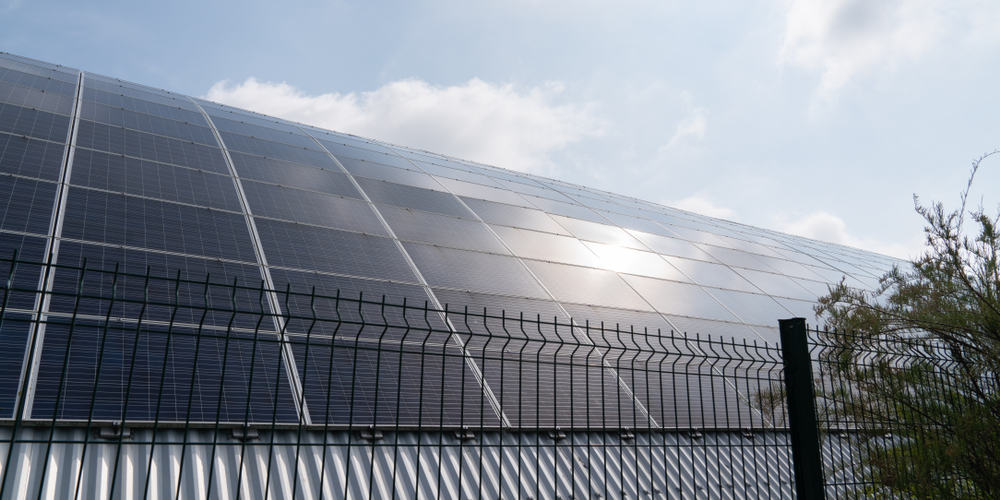Photovoltaic installation (PV installation)
Installation of Photovoltaic Systems
Die Montage einer Photovoltaik-Anlage (auch PV Montage genannt) unterliegt Normen und Vorschriften, um The installation of a photovoltaic system (also known as PV installation) is subject to standards and regulations in order to ensure flawless and safe operation. Additionally, different roof structures, such as pitched and flat roofs, require different installation methods. We install large on-roof and ground-mounted systems throughout Austria.
Important points for PV installation:
1. location: Choose a sunny location without shading.
2. statics: Make sure that the roof can bear the additional load.
3. alignment and inclination: Align the modules optimally to the sun.
4. mounting structure: Choose the right mounting for your roof.
5 Electrical connections: Have the wiring carried out by a professional.
6 Safety: Pay attention to lightning protection and current protection.
7 Permits: Find out about local regulations and permits.
8. maintenance: Schedule regular inspections and cleaning.
As a professional PV installation company, our experts can provide efficient support with the installation of a PV system. Taking into account the specific site and system configurations, we have already installed numerous electrical power plants for a variety of customers.
Continuously trained technicians
Project engineers for planning and logistics
Days a year since 1994
neutral workshop assembly trucks
PV installation: checklist and procedure
Ensure comprehensive planning
To ensure a smooth workflow on the construction site, complete planning is necessary.
For the installation of the substructure, the substructure manufacturer and its specifications are required. Additionally, it’s important to know the type and size of the roof and, if applicable, the rafter spacing.
Since each module manufacturer has different requirements and instructions for installing their modules, it is important to know which type of modules will be used.
Occupancy and shoring plans are necessary documents to be used for on-site installation.
During planning, particular attention must be paid to the building statics, including snow and wind loads, and the system statics. It is essential to comply with local building regulations, standards, and environmental protection provisions.
Preparation
Check the delivered materials on-site for completeness and correctness. It is beneficial to have the bill of materials from the substructure manufacturer and any delivery notes available on-site.
Before installation, it must be clarified how safe access to the roof is to be provided, how fall protection can be ensured and whether a climbing aid is required for the PV installation personnel and for transporting the components onto the roof.
For tiled roofs, it is recommended to have spare tiles available at the construction site to immediately replace any broken tiles and maintain the roof’s integrity.
PV installation
Once all preparations have been made and weather conditions permit, the installation can be carried out efficiently. The installers arrive at the construction site, inspect the materials and site conditions, and proceed with the installation according to the plans, including the inverter wiring.
In case of issues or necessary modifications, a quick and target-oriented solution is found in collaboration with our client and implemented accordingly.
Site Completion & Commissioning
After completing the work, a comprehensive inspection is conducted, and we provide you with a photo documentation and filled-out construction reports according to your preferences.
Registration with the grid operator is necessary to inform them about the injection of power into their grid. An operational commissioning report is also important to document the earliest possible feed-in date during initial commissioning. The presence of the grid operator is mandatory for this. It is advisable to attend this appointment together with the system installer and subsequently receive instruction on the system’s operation.
Reasons for a PV System
The use of renewable energy sources such as photovoltaics remains a focal point in the future. These systems have a green image and are accordingly supported.
The new Renewable Expansion Act (EAG), to be enacted in 2022 , aims to produce an additional 11 TWh of solar power by 2030. This corresponds to an annual expansion of 1,100 MWp, roughly double the current installation rate. The new EAG support models for households and businesses are intended to bring about the necessary upswing.
There are many reasons to opt for a PV system. While an initial investment is required, the system pays for itself within a few years. Subsequently, the system significantly reduces the cost of annual electricity consumption for businesses or households through continuous power generation.
If you would like to benefit from a high-quality and structured service, we are your point of contact at all times.
We accompany you every step of the way and enable you to implement your project competently.

Kevin Beck
Head of Department – Electrical Assembly

































































































































































































